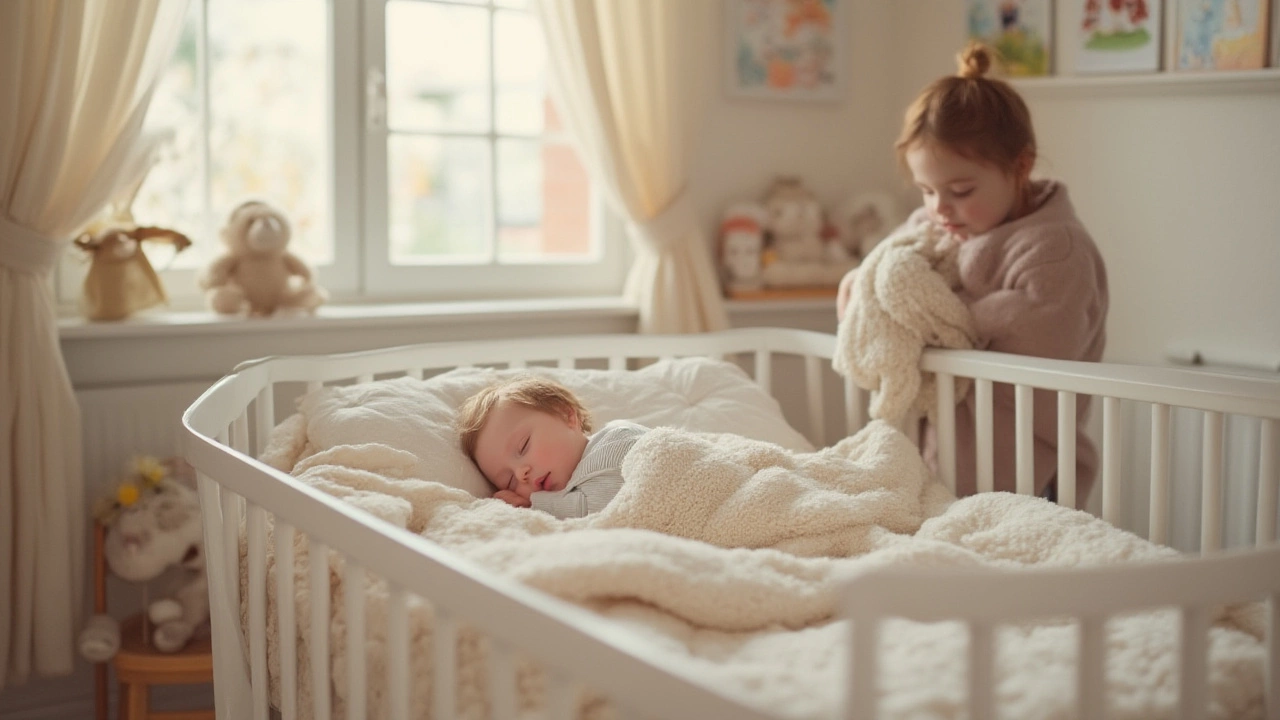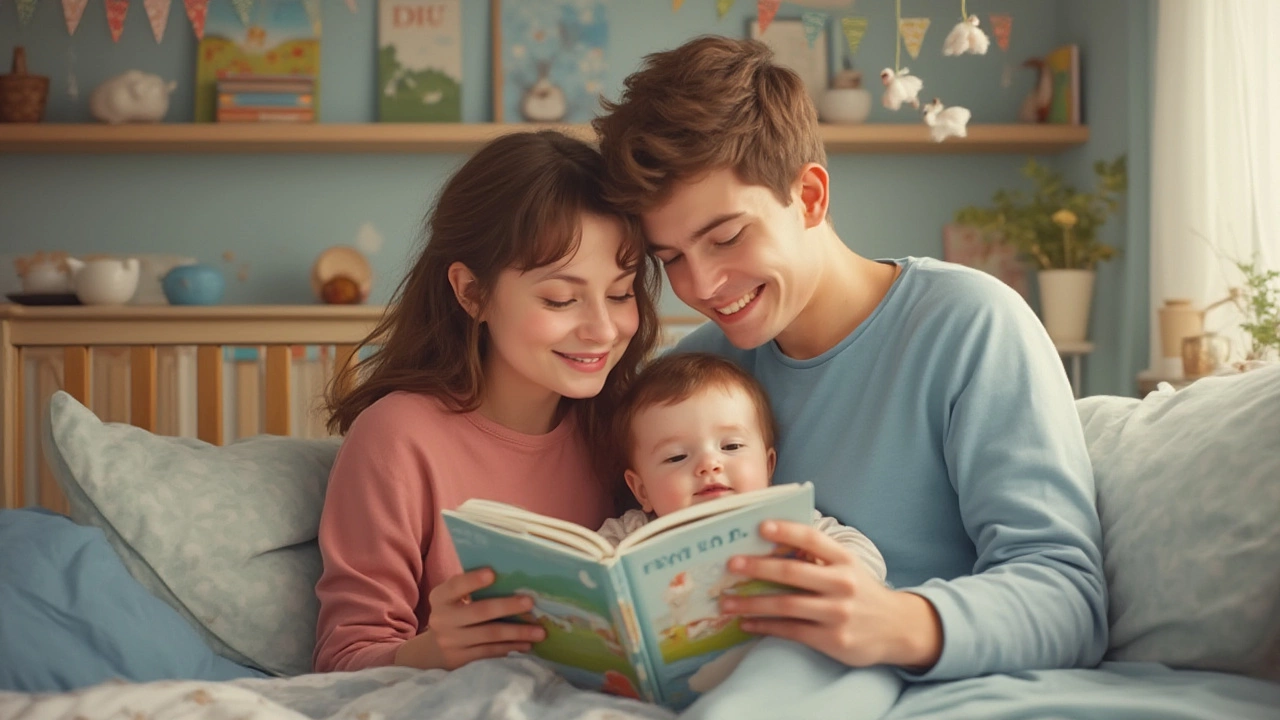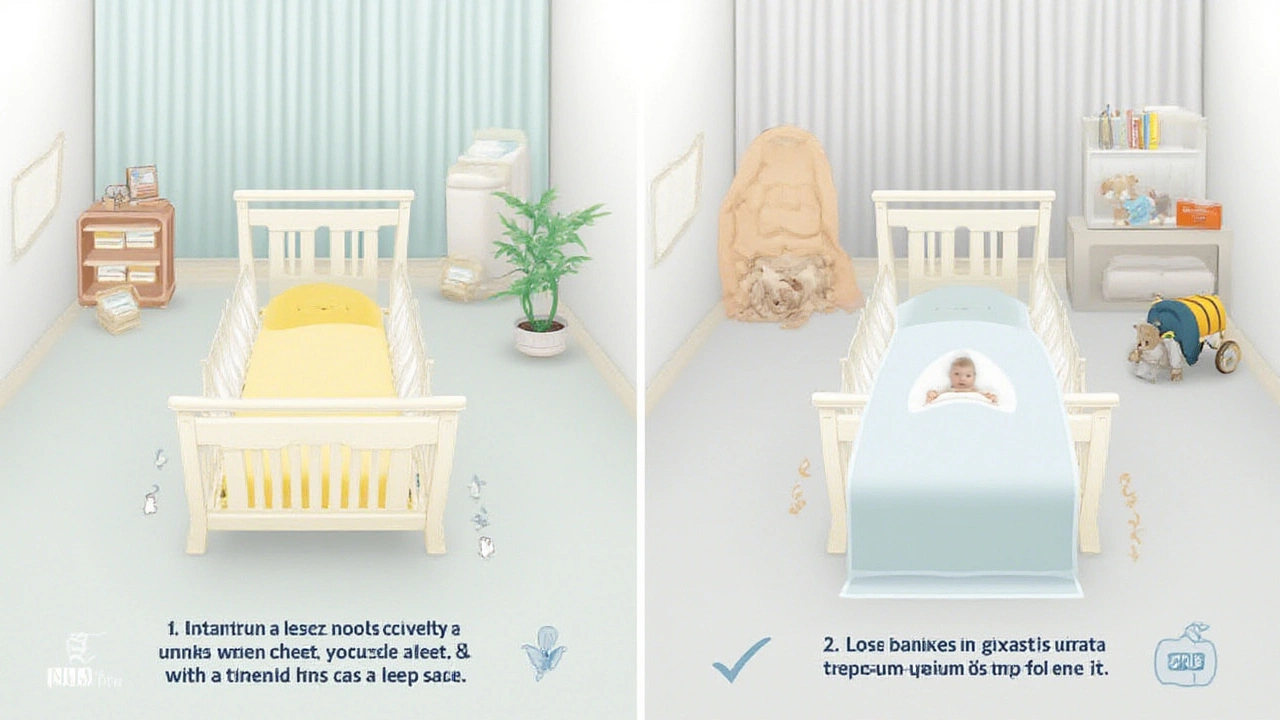When to Add a Blanket to a Crib: Safe Sleep Tips for Babies

Ever notice how those adorable baby blankets at the store practically call your name? Soft pastels, tiny graphics—so tempting! But if you toss one of those cuties into your newborn’s crib too soon, you might be putting your little one at risk. You’d be surprised how easy it is to get mixed advice about blankets, from old-school grandparents to well-meaning friends scrolling mom forums. So, when is it actually safe to add a blanket to a crib, and what’s just a sweet—but risky—throwback to yesteryear?
Why Timing Matters: The Risks of Blankets in a Crib
Blankets may look innocent, but in a crib with a baby under twelve months, they’re a surprising source of danger. The American Academy of Pediatrics (AAP) has stuck to a clear rule for years: Wait until your baby is at least one year old before introducing any loose bedding in the crib. Here’s the gritty detail—they’re not just being strict. Loose blankets can block a baby's airway or lead to overheating, two things that send shivers down every parent's spine. Sudden Infant Death Syndrome (SIDS), which tends to peak between two and four months of age, has a documented correlation with soft bedding in sleep environments. You might think a thin swaddle or lightweight blanket is harmless, but studies have clocked dozens of tragic cases where such items played a role in SIDS or accidental suffocation.
By the numbers, around 3,500 babies in the U.S. die unexpectedly during sleep each year, with soft bedding named as a factor in almost 70% of these cases. That simple piece of fluff meant to help them feel cozy? If given too soon, it poses more risk than relief. Even those baby quilts passed down through generations should stay on display, not in your baby's crib.
Safe Sleep Guidelines: What Experts Recommend
If you feel lost in a haze of sleep advice, you’re not alone. The AAP, CDC, and other child safety groups all echo similar mantras—bare is best. Your child’s crib should only have a fitted sheet on a firm, safety-standard mattress until their first birthday. Forget pillows, crib bumpers, quilts, or stuffed animals. I know, it looks so plain! But babies don’t mind minimalism. In fact, that’s what keeps them safest.
Here’s a quick cheat sheet from the most recent guidelines (updated in mid-2024):
- Put your baby on their back, every nap and night.
- Nothing in the crib but the baby—no bumper pads, toys, or loose bedding.
- Dress your little one in a snug, breathable onesie or a sleep sack—skip the extra blankets.
- Ensure the room stays at a comfortable temperature (68-72°F works for most families).
- If you’re using a shared bedroom setup, keep baby in their own separate sleep space, not your bed.
I remember when Lucas and I brought our oldest home. My mother-in-law, ever the traditionalist, insisted our baby would freeze at night without her hand-knit afghan. But after a pediatrician gently pointed out the updated research (and handed us a pamphlet), she tucked that afghan away for future toddler story times. It’s not about hurting anyone’s feelings—it’s about a baby’s precious safety.

When Is It Actually Safe? Milestones and Clues
Babies aren’t all on the same timeline. Some crawl earlier; others take a bit more time with milestones. But when it comes to adding a blanket, there’s less wiggle room. According to the AAP and CDC, it’s safest to wait until your child turns one. That’s because, by twelve months, most babies have the motor skills to roll, pull objects away from their face, and adjust themselves if something covers their nose or mouth.
After the first birthday, you can start thinking about introducing a lightweight, breathable blanket. Here’s the trick: go for cotton, muslin, or bamboo, and keep it small—nothing that could tangle around your tot or drag along the floor. Some parents opt for “lovey” security blankets around this age—think mini square blankies with satin edges. If you’re still anxious about the transition, sleep sacks (aka wearable blankets) are perfect for older babies and wobbly toddlers who like to kick covers off. If your child is standing or climbing, skip items that could be used to gain leverage.
Check this milestone chart if you aren’t sure your little one is ready:
| Age | Motor Skill | Blanket Safety |
|---|---|---|
| Birth-6 months | Limited head/neck control | Blanket not safe |
| 6-12 months | Rolling & crawling | Blanket still not safe |
| 12+ months | Pulls objects away, sits up alone | Light blanket OK |
How to Choose the Right Blanket and What to Avoid
So you’ve hit that one-year mark and the nursery feels a little less sterile. Now comes the fun part—picking a safe, cozy blanket. Not every blanket is crib-worthy, though. You want to avoid anything heavy, fluffy, or crocheted with large holes (cute as grandma’s handiwork might be). Loose yarn or fringe can wrap around tiny fingers or toes, or, in rare cases, around the neck.
Look for blankets labeled “breathable” and “hypoallergenic”—ideally, those made from 100% cotton or bamboo. They’re soft but not overly warm, reducing any choking or overheating risks. Skip blankets with beading, strings, or embellishments that could become detached. And keep it small: trust me, a toddler has zero need for a full-sized throw! Most big-brand sleep experts push for blankets that measure no bigger than 40x60 cm (roughly 16x24 inches). If you’re wondering about weighted blankets, pediatricians say to avoid them until kindergarten or beyond, unless your child’s doctor prescribes one for a specific sensory need.
I learned the hard way during a camping trip when I packed our usual oversized blanket for a chilly night. Halfway through, my little one kicked it off, then managed to get his foot tangled up—cue midnight panic and an hour of untangling. For home, stick with purpose-made “toddler” or “crib” blankets. When in doubt, less is more. No need to stress, either—those wearable sleep sacks really work all year round, even past the first birthday if your kiddo likes them.

Extra Tips for Parents Worried About Warmth or Comfort
If you’re worried your baby will get cold, don’t layer blankets—layer clothes. Dressing your child in footed pajamas under a sleep sack offers as much warmth as a blanket, minus the suffocation hazard. According to analysis from the National Institutes of Health, overheating is another hidden risk factor for sleep injuries. Your baby doesn’t need to feel toasty—just comfortably warm to the touch. Test with your hand or gently touch behind their neck. Sweaty or flushed skin means too many layers. If the nursery is draftier than you’d like, try blackout curtains, draft stoppers, or shifting the crib away from exterior walls.
A lot of parents use a room thermometer. Ideal baby room temps hover between 68 and 72°F (about 20-22°C). If the nursery seems chilly and you want complete peace of mind, choose pajamas with built-in feet and add a wearable sleep blanket. Keep hats, mittens, and any sort of head covering off in the crib to prevent overheating.
Here’s a quick list of do’s and don’ts for your reference:
- Do use sleep sacks or wearable blankets before age one.
- Do dress baby in one more layer than you would wear to bed.
- Do check for drafts or cool air sources near the crib.
- Don't put hats, bows, or headbands on baby while sleeping.
- Don't use bumper pads, pillows, or stuffed toys in the crib—even after a year, keep it simple.
- Don't substitute a blanket for a swaddle with a newborn or young infant.
If you're at all unsure, ask your pediatrician—most love those quick phone calls or message portal checks. It’s not overprotective; it’s being a smart, responsible parent. Plus, you get to keep those Instagram-worthy baby blankets for stroller rides, supervised nap times on a mat, or as a comfort item later when your little one moves to a toddler bed.

